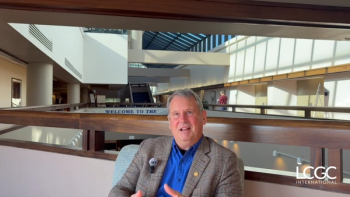
Monitoring Environmental PFAS Using Combustion Ion Chromatography
During EAS 2024, Jay Sheffer, a Product Specialist at Metrohm USA, discussed how combustion ion chromatography (CIC) can help address PFAS’ impact on the environment.
During the 2024 Eastern Analytical Symposium (EAS), which kicked off November 18 in Plainsboro, New Jersey, scientists from around the globe gather to discuss cutting-edge advancements in analytical chemistry. A session on November 18, titled “The Evolving Role of Analytical Chemistry in PFAS Environmental Issues,” focused on how various techniques can help manage and mitigate the presence of per- and polyfluoroalkyl substances (PFAS) in different substances. In one presentation, “A Non-Targeted Approach for PFAS Analysis Using Combustion Ion Chromatography,” Jay Sheffer, a Product Specialist at Metrohm USA, demonstrated how CIC could help improve PFAS analysis methods.
Combustion ion chromatography (CIC), which combines a combustion system with an ion chromatograph’s analytical separation precision, is an automated technique used to determine at wt.ppm–wt.% range, halogens (fluoride, chloride, bromide, iodide) and sulfur in a wide scale of samples, like coolants for mechanical engineering, recycled materials, and many others (1). The CIC process reduces time and labor by eliminating complex sample preparation; further, it also eliminates hazardous chemical usage that can be applied during acid digestion or back extraction, he said.
CIC is effective in detecting fluorine compounds, which, according to Sheffer, is not something most elemental analyzers do well. This technique has been used for some time now, especially in the petrochemical industry, to measure solids, liquids, and gases; however, its detection limit is usually nowhere near those of mass spectrometry (MS)-related techniques. Further, this study focused on EPA method 1621, “Determination of Adsorbable Organic Fluorine (AOF) in Aqueous Matrices by Combustion Ion Chromatography (CIC),” which was officially published in January 2024. AOF sample preparation in this process involves passing 100 mL of a liquid sample through activated carbon–in this instance, Sheffer specifically named charcoal–which will cause organic compounds to stick to the carbon. During combustion, organic fluoride becomes inorganic, with the gases transferring the fluoride to an absorber tube, where it gets trapped in an absorber solution, in this case reagent water. From there, ion chromatography was used to analyze fluorine content in the absorption solution, being reported in µg/L in the original water sample.
There are different ways CIC can be calibrated, mainly through direct IC calibration, which only affects IC, or calibration through furnace, which is a full CIC calibration process. The former involves a series of steps; first, calibrating IC using a series of inorganic fluoride standards, followed by analyzing the IC check standard to verify recovery. Next, an organic fluoride check standard through the entire combustion system to verify recovery of organic fluoride in CIC. Finally, PFAS is extracted from a known aqueous sample containing organic fluoride by AOF and analyze charcoal via CIC to verify recovery of organic fluoride through the entire AOF-CIC process. For calibration through furnace, CIC is calibrated using carious organic fluoride standards, followed by the CIC and AOF-CIC recovery checks that occur in the direct IC calibration.
CIC is an established technique that, while typically used for petrochemical applications, is being tested in various other fields. Its ability to measuring fluorine and similar elements makes it a promising approach, with non-targeted analysis providing a better risk assessment of true PFAS impact. Organic fluorine measurements capture more information than targeted PFAS analysis alone, leading to the active development of AOF-CIC testing methodologies. Though there is more work to be done, CIC could help revolutionize how different industries approach managing environmental contamination.
References
(1) Combustion Ion Chromatography (CIC). Eurofins 2024.
(2) Sheffer, J. A Non-Targeted Approach for PFAS Analysis Using Combustion Ion Chromatography. In Eastern Analytical Symposium 2024, Plainsboro, NJ, 2024.
Newsletter
Join the global community of analytical scientists who trust LCGC for insights on the latest techniques, trends, and expert solutions in chromatography.




